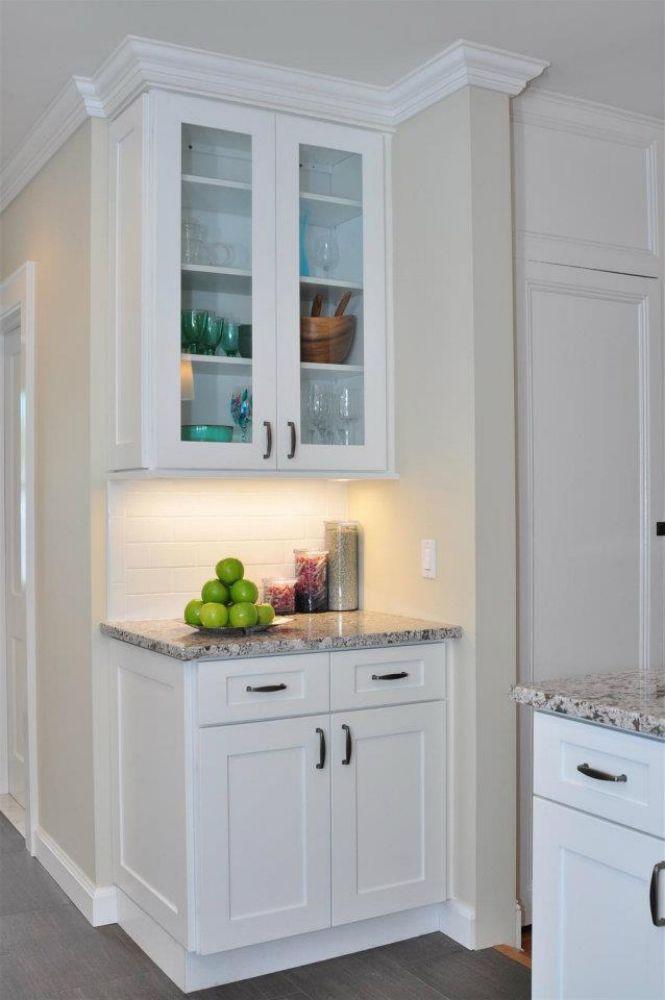Introduction to Forevermark Petit Sand Cabinets
Forevermark Petit Sand cabinets are prized for their soft, neutral finish, versatility, and ability to complement both contemporary and traditional kitchen designs. Their elegant, light tone adds brightness to any space while maintaining a sophisticated look. While these cabinets are designed to be durable and long-lasting, proper care is essential to preserve their finish, structural integrity, and overall aesthetic over time.
Preserving cabinets like Forevermark Petit Sand involves understanding how to clean them safely, protect them from damage, and maintain their appearance with minimal effort. This article provides a comprehensive guide on the precautions homeowners should take to extend the life and beauty of these cabinets.
Why Preservation Matters
Every kitchen experiences daily wear and tear, from cooking spills to frequent opening and closing of cabinet doors. Without proper precautions, cabinets can suffer from scratches, discoloration, water damage, and hardware wear. Preservation not only keeps the cabinets looking new but also protects your investment, as high-quality cabinetry can significantly enhance the value of a home.
Investing time in preventive care is always easier than addressing damage after it occurs. By following recommended precautions, homeowners ensure that the subtle beauty of Petit Sand cabinets continues to shine for years.
Safe Cleaning Practices
A crucial part of preservation is using safe cleaning practices that do not harm the finish. Recommended precautions include:
-
Use Mild Cleaners Only – Stick to warm water and a few drops of gentle dish soap for everyday cleaning. Avoid harsh chemicals, bleach, or ammonia-based products.
-
Soft Cleaning Tools – Use microfiber cloths rather than abrasive pads to prevent scratches. Avoid steel wool or scouring sponges.
-
Spot Cleaning for Spills – Address food spills, grease, or liquids immediately to prevent staining or water damage.
-
Avoid Excess Water – Do not soak the cabinets, and always dry surfaces after cleaning to prevent moisture from seeping into joints.
Safe cleaning practices are the foundation of cabinet preservation.
Temperature and Humidity Control
Wood and wood-based finishes are sensitive to environmental conditions. To protect Petit Sand cabinets:
-
Maintain Stable Indoor Temperature – Extreme heat can warp cabinet doors or cause finishes to crack.
-
Control Humidity Levels – High humidity can lead to swelling or mold, while extremely dry air may cause cracking. Using a dehumidifier or maintaining indoor humidity around 40–50% is ideal.
-
Avoid Direct Sunlight – Prolonged exposure to sunlight can fade the cabinet’s finish. Window treatments or UV-protective films help reduce this risk.
Proper environmental control prevents damage that can be costly and difficult to repair.
Protecting Cabinet Surfaces
Everyday activities in the kitchen can put cabinets at risk of scratches, dents, or stains. Precautions include:
-
Use Cabinet Liners – Shelves and drawers benefit from liners that prevent spills and scratches.
-
Avoid Sharp or Heavy Objects Contacting Surfaces – Be cautious when placing appliances or utensils near cabinet doors.
-
Install Bumpers or Soft-Close Hinges – This prevents doors from slamming, reducing stress on joints and minimizing wear over time.
-
Handle Cabinets with Care – Teach household members to open and close doors gently to extend their lifespan.
These measures help maintain the smooth, uniform finish of Petit Sand cabinets.
Preventing Water and Heat Damage
Kitchens are areas with high exposure to moisture and heat. To protect cabinets:
-
Wipe Spills Immediately – Water, coffee, or sauces can cause staining or swelling if left on the surface.
-
Keep Appliances at a Safe Distance – Microwaves, toaster ovens, and coffee machines can generate heat or steam that damages cabinet surfaces.
-
Use Trivets and Mats – Placing hot pans or dishes directly against cabinet surfaces can cause discoloration or warping.
These simple precautions minimize the risk of damage caused by water and heat.
Regular Maintenance and Inspection
Routine maintenance ensures long-term preservation:
-
Check Hinges and Hardware – Tighten loose screws, lubricate hinges, and inspect knobs or pulls for wear.
-
Polish Cabinets Occasionally – Use a non-wax, cabinet-safe polish or conditioner to maintain luster and add a protective layer.
-
Inspect for Damage – Look for small scratches, chips, or discoloration and address them early to prevent spreading.
-
Dust Regularly – Preventing dust buildup protects the finish and reduces cleaning effort.
Regular maintenance allows you to catch potential issues before they become serious problems.
Handling Cleaning Mistakes
Even careful homeowners can make occasional mistakes. Corrective measures include:
-
Removing Stains Properly – Baking soda paste or diluted soap solutions can remove minor stains without damaging the finish.
-
Avoiding Abrasive Fixes – Do not sand or scrape the cabinets harshly. Use gentle methods recommended for wood surfaces.
-
Test New Products – Always test cleaners or polishes on a small, hidden area first to ensure they do not alter the color or finish.
Correct handling of mistakes helps preserve the cabinets without requiring costly repairs or refinishing.
Eco-Friendly Preservation Tips
Sustainable practices not only benefit the environment but also preserve cabinet quality:
-
Use Plant-Based Cleaners – Castile soap or mild essential oil solutions are gentle yet effective.
-
Reuse Microfiber Cloths – Reduce waste while maintaining cleaning effectiveness.
-
Avoid Chemical Overuse – Stick to necessary cleaning; excessive chemicals can deteriorate the finish over time.
-
Recycle Packaging – Keep or reuse packaging materials for cabinet protection if storing before installation.
Eco-friendly precautions align with careful cabinet maintenance and long-term preservation.
Precautions for Long-Term Storage
If cabinets are purchased but not installed immediately, take extra precautions to prevent damage:
-
Store in a Climate-Controlled Space – Avoid garages or basements with fluctuating temperatures or humidity.
-
Keep Cabinets Off the Floor – Use pallets or supports to prevent moisture absorption.
-
Cover Cabinets – Use breathable covers to protect from dust, debris, and accidental scratches.
-
Avoid Stacking Heavy Items – Do not place heavy objects on top, as this can cause warping or denting.
Proper storage ensures cabinets remain in perfect condition until installation.
Conclusion
Preserving Forevermark Petit Sand cabinets requires a combination of safe cleaning practices, environmental control, routine maintenance, and careful handling. Avoiding harsh chemicals, excessive water, and direct heat, while maintaining proper temperature and humidity, helps maintain the cabinets’ finish and structural integrity. By taking these precautions, homeowners can enjoy the elegance and functionality of their Petit Sand cabinets for many years, protecting both their investment and the aesthetic appeal of their kitchen or living space.
Frequently Asked Questions
Q1: Can I use standard furniture polish on Forevermark Petit Sand cabinets?
A: Only use non-wax, cabinet-safe polishes. Standard furniture polish may leave residue or damage the finish.
Q2: How often should I check cabinet hardware?
A: Inspect and tighten screws every few months, or more frequently if doors feel loose or misaligned.
Q3: Is it okay for sunlight to hit the cabinets occasionally?
A: Occasional sunlight is generally fine, but prolonged exposure can cause fading. Use blinds or UV film for protection.
Q4: Can I use vinegar for cleaning Petit Sand cabinets?
A: Vinegar should only be used occasionally and diluted. Regular use may erode the finish over time.
Q5: How can I prevent scratches from daily kitchen use?
A: Use shelf liners, avoid placing sharp or heavy items directly on surfaces, and consider soft-close hinges to minimize impact.

